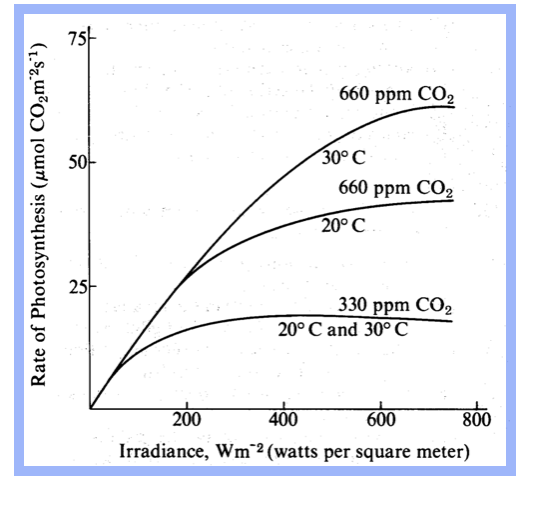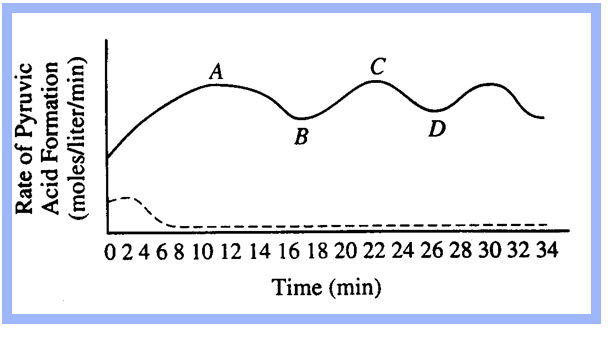Instructions for Side by Side Printing
- Print the notecards
- Fold each page in half along the solid vertical line
- Cut out the notecards by cutting along each horizontal dotted line
- Optional: Glue, tape or staple the ends of each notecard together
AP Bio Review 1
front 1 Which of following is a correct statement about the relationship between ph and the hydrogen-ion concentration of a solution? a. There are no hydrogen ions present in a solution with a basic pH b. There are no hydrogen ions present in a solution with a pH of 7 c. The concentration of hydrogen ions in a solution with a pH of 7 is 100 times greater than that in a solution with a pH of 9 d. The concentration of hydrogen ions in a solution with a pH of 5 is twice that than with a pH of 3 | back 1 c |
front 2 A controlled experiment is one in which... | back 2 C |
front 3 A covalent bond is likely to be polar when... | back 3 A |
front 4 If the pH of a solution is decreased from 7 to 6, it means that
the... | back 4 E |
front 5
| back 5 A |
front 6 The base composition of DNA varies from one species of bacteria to
another. Which of the following ratios would you expect to remain
constant in the DNA. regardless of the species? | back 6 A |
front 7 Analysis of DNA sequences from two individuals of the same species
results in a greater estimate of genetic variability than does
analysis of amino acid sequences from the same individuals
because: | back 7 A |
front 8 Which of the following is a correct statement about
mutations? | back 8 A |
front 9 The working of lac operon is important for which of the following
reasons? | back 9 A |
front 10 Within the cell, many chemical reactions that, by themselves, require
energy input (have a positive free-energy change) can occur because
the reactions | back 10 A |
front 11 Which of the following is true of both mitochondria and
chloroplasts? | back 11 C |
front 12 The tertiary structure and function of a | back 12 D |
front 13 Metabolism of which of the following molecules results in the
greatest net usable energy per gram? | back 13 A |
front 14 Which of the following can be used to determine the rate of an
enzyme-catalyzed reaction? | back 14 the rate of the substrate used up |
front 15 Which statement is correct about pH? | back 15 pure water has a neutral pH of 7 because the concentration of hydrogen ions equals the concentration of hydroxyl ions |
front 16 Substrate F can be removed from enzyme G by dialysis. Enzyme G is inactive after removal of F, but can be reactivated by adding F. Substrate F is probably a. protein molecule b. DNA molecule c. starch molecule d. coenzyme e. competitive inhibitor | back 16 D |
front 17 If plants are grown for several days in an atmosphere containing 14CO2 in place of 12CO2 one would expect to find a. very little radioactivity in the growing leaves b. large amounts of radioactive water released from the stomates c. a large increase in the 14C in the starch stored in the roots d. a large decrease in the rate of carbon fixation in the guard cells | back 17 a large increase in 14C in the starch stored in the roots. |
front 18 The end products of the light-dependent reactions of photosynthesis are | back 18 ATP, NADPH, O2. |
front 19 The Calvin cycle is | back 19 is a light dependent reaction that requires carbon fixation through RuBisCo enzyme that uses ATP and NADPH from light reactions to produce 3C sugars. |
front 20 ATP and NADPH are important for photosynthesis. How are the molecules made available for the synthesis of carbohydrates in the second part of photosynthesis? | back 20 Chemiosmosis produces these coenzymes. Essentially, this process consists of a rush of protons across a membrane (the thylakoid membrane, in this case), along with the synthesis of ATP molecules. |
front 21 Which of the following is an important difference between light-dependent and light-independent reactions of photosynthesis? A.The light-dependent reactions occur only during the day; the light-independent reactions occur only during the night. BThe light-dependent reactions occur in the cytoplasm; the light-independent reactions occur in chloroplasts. C.The light-dependent reactions utilize CO2 and H2O; the light-independent reactions produce CO2 and H2O. D.The light-dependent reactions produce ATP and NADPH2; the light-independent reactions use energy stored in ATP and NADPH. | back 21 D |
front 22 The light reactions supply the Calvin Cycle with which of the
following | back 22 B |
front 23 The final product of the Calvin Cycle is | back 23 A |
front 24 Carbohydrate-synthesizing reactions of photosynthesis directly
require | back 24 products of light reactions |
front 25 Aerobic respiration and the light dependent phases of photosynthesis
have all of the following characteristics in common except | back 25 B |
front 26 Which of the following statements accurately describes the difference
between aerobic and anaerobic respiration? | back 26 B |
front 27 By using the isotope O18 as a tracer element in studying photosynthesis, it has been possible to show that the O2 released in the process comes from a. O16 b. sugar c. carbon dioxide only d. water only e. carbon dioxide and water | back 27 D |
front 28 27. Aerobic and anaerobic respiration are alike in all of the following ways except a. both release energy from glucose b. Acetaldehyde is converted into ethyl alcohol c. ADP is changed to ATP d. CO2 is a product e. NAD is reduced | back 28 B |
front 29  The graph shows the relationship of photosynthetic rate and irradiance (light intensity) influenced by both temperature and carbon dioxide level. 5. According to the graph, the greatest rate of photosynthesis occurs when CO2 is present at
| back 29 3 |
front 30  26. From the data in the graph, which of the following conclusions is most reasonable?
| back 30 2 |
front 31  Which of the following seems most likely from the data?
| back 31 A |
front 32  A tissue culture of vertebrate muscle was provided with a constant excess supply of glucose under anaerobic conditions starting at time zero and the amounts of pyruvic acid and ATP produced were measured. The solid line in the graph above represents the pyruvic acid produced in moles per liter per minute. ATP levels were also found to be highest at points A and C, lowest at B and D. A second culture was set up under the same conditions, except that substance X was added, and the results are indicated by the dotted line. 8. The rate of pyruvic acid formation fluctuates because
| back 32 4 |
front 33  Which of the following best accounts for the shape of the solid line between points A and D?
| back 33 3 |
front 34  It is most reasonable to hypothesize that, in the breakdown of glucose, substance X is
| back 34 2 |
front 35  Which of the following is most likely to result if oxygen is added to the tissue culture?
| back 35 2 |
front 36 [17] Which of the following organelles is correctly matched with its
function? | back 36 A |
front 37 Which of the following is TRUE of C (subscript 4), plants such as
corn? | back 37 A |
front 38 Typical of prokaryotic celis after fission
[Match] | back 38 D |
front 39 [70] Eukaryotic cells at prophase of mitosis
[Match] | back 39 B |
front 40 [71] Eukaryotic cells at metaphase I
[Match] | back 40 C |
front 41 [72] Plasmid exchanged by conjugating bacteria
[Match] | back 41 E |
front 42 Describe the difference between the two processes in cellular respiration that produce ATP: oxidative phosphorylation and substrate-level phosphorylation | back 42 Most of the ATP produced in cellular respiration come from oxidative
phosphorylation, in which the energy released from redox reactions in
an electron transport chain is used to produce ATP. |
front 43 Which of the following occurs in both fermentation and aerobic cellular respiration a. osygen and carbon dioxide are consumed b. FAD is reduced, driving ATP synthesis c. Proton gradients are produced across membranes d. ATP is synthesized from ADP and inorganic phosphate e. most of the energy from glucose is released as carbon dioxide | back 43 D |
front 44 Metabolism of which of the following molecules results in the
greatest net usable energy per gram? | back 44 A |
front 45 Which of the following best describes allosteric inhibition of an
enzyme? | back 45 C |
front 46 Production of ATP occurs in all of the following processes
EXCEPT | back 46 E |
front 47 The flow of which of the following into the mitochondrial matrix
provides the chemiosmotic energy for the synthesis of ATP? | back 47 D |
front 48 Which of the following causes the rapid change of membrane polarity
during an action potential? | back 48 B |
front 49 Which of the following is NOT associated with nuclear division and cell division in animals? a. formation of spindles b. constriction of the dividing cells c. duplication of chromosomes d. separation of chromosomes e. formation of cell plates | back 49 E |
front 50 Crossing-over is a process that involves a. exchange of genetic material between chromosomes that are not homologous b. random segregation of genes on different chromosomes c. continued maintenance of genetic stability d. exchange of genetic material between chromosomes that are homologous e. random segregation of genes on homologous chromosomes | back 50 D |
front 51 if 2n=48 for a particular cell, then the chromosome number in each cell after meiosis would be | back 51 24 |
front 52 All of the following are true statements about meiosis in mammals
EXCEPT: | back 52 D |
front 53 Which term describes centrioles beginning to move apart in animal cells | back 53 Prophase |
front 54 Which term describes centromeres uncoupling, sister chromatids separating, and the two new chromosomes moving to opposite poles of the cell | back 54 Anaphase |
front 55 f cells in process of dividing are subjected to colchicine, a drug that interferes with the functioning of the spindle apparatus, at which stage will mitosis be arrested | back 55 Metaphase |
front 56 Imagine looking through a microscope at a squashed onion root tip. The chromosomes of many of the cells are plainly visible. In some cells, replicated chromosomes are aligned along the center of the cell. These particular cells are in which stage of mitosis | back 56 metaphase |